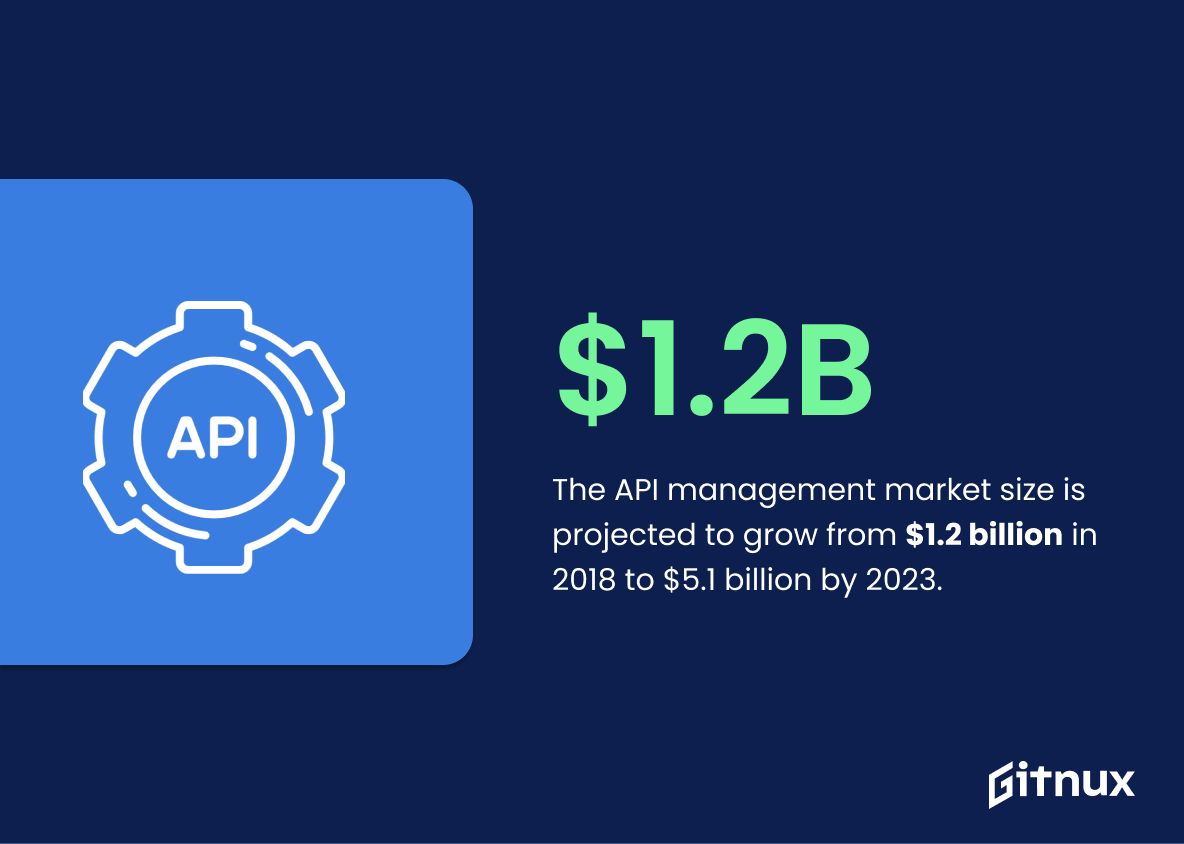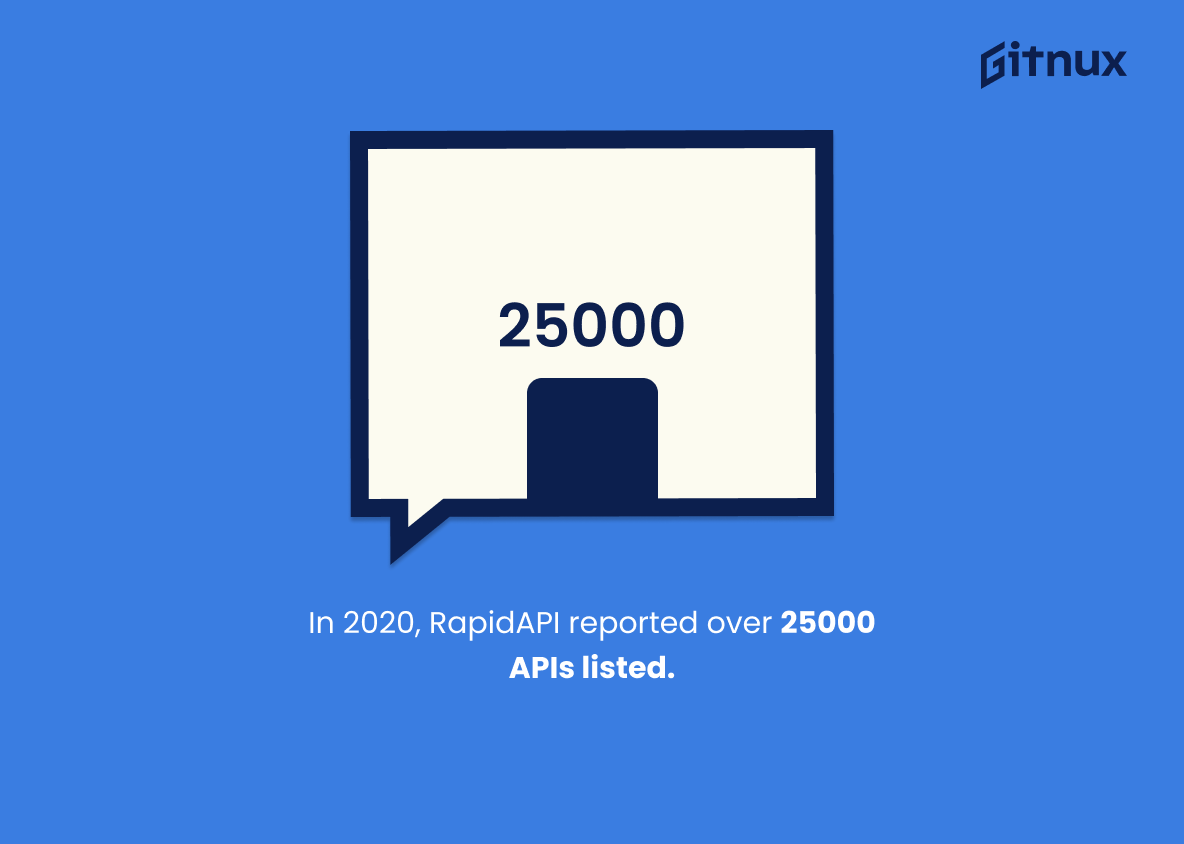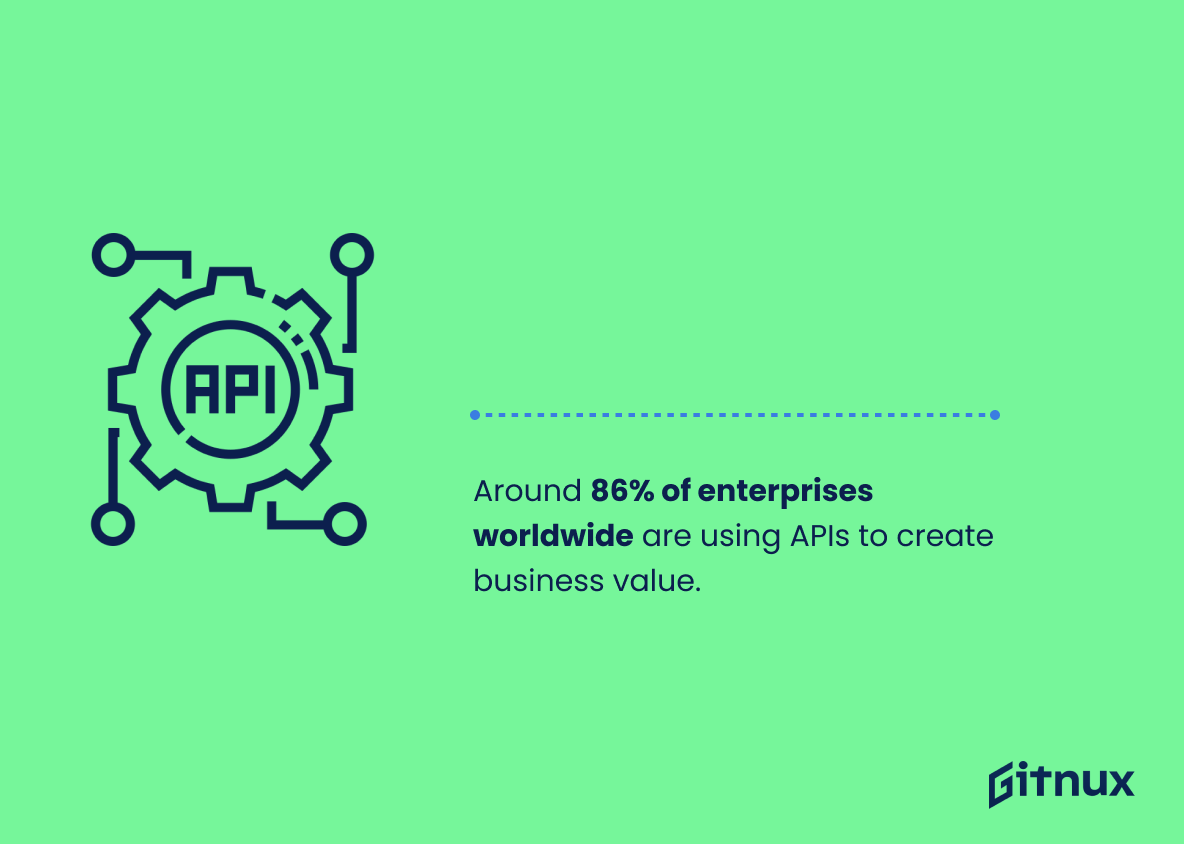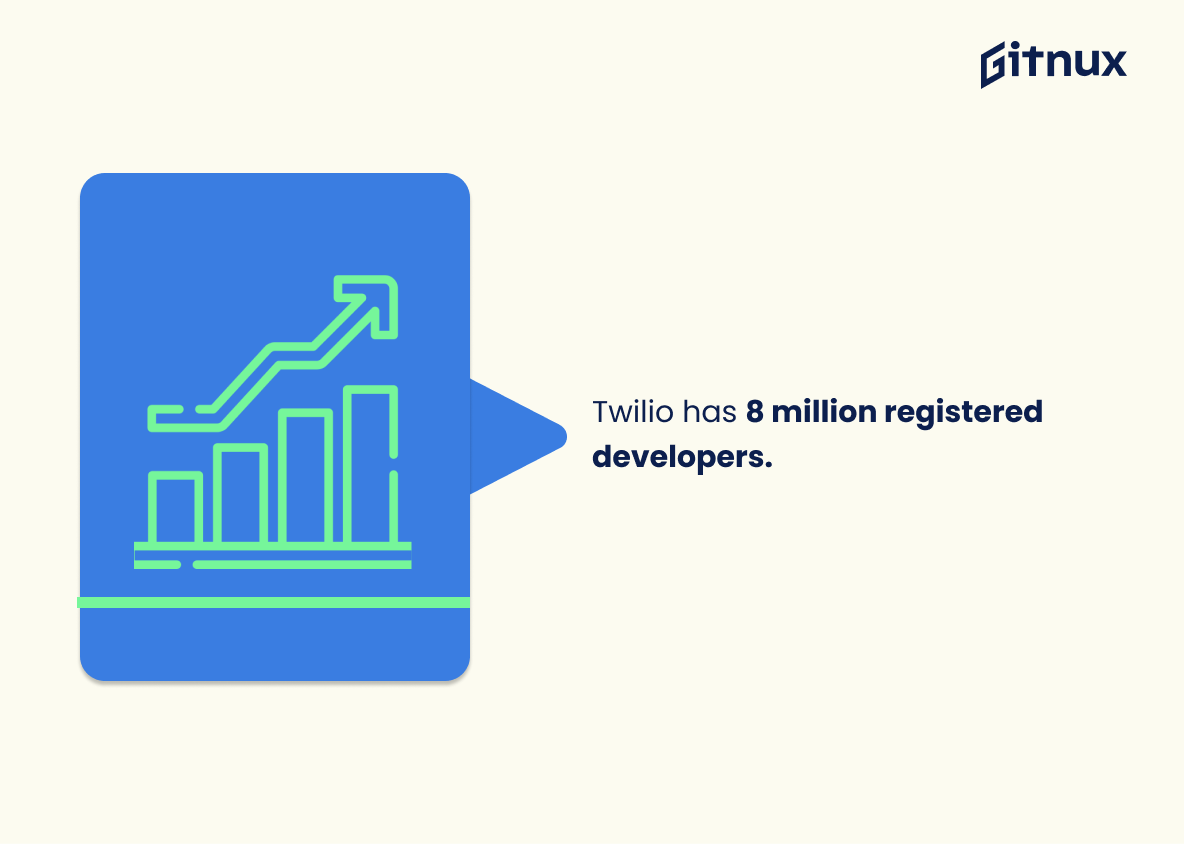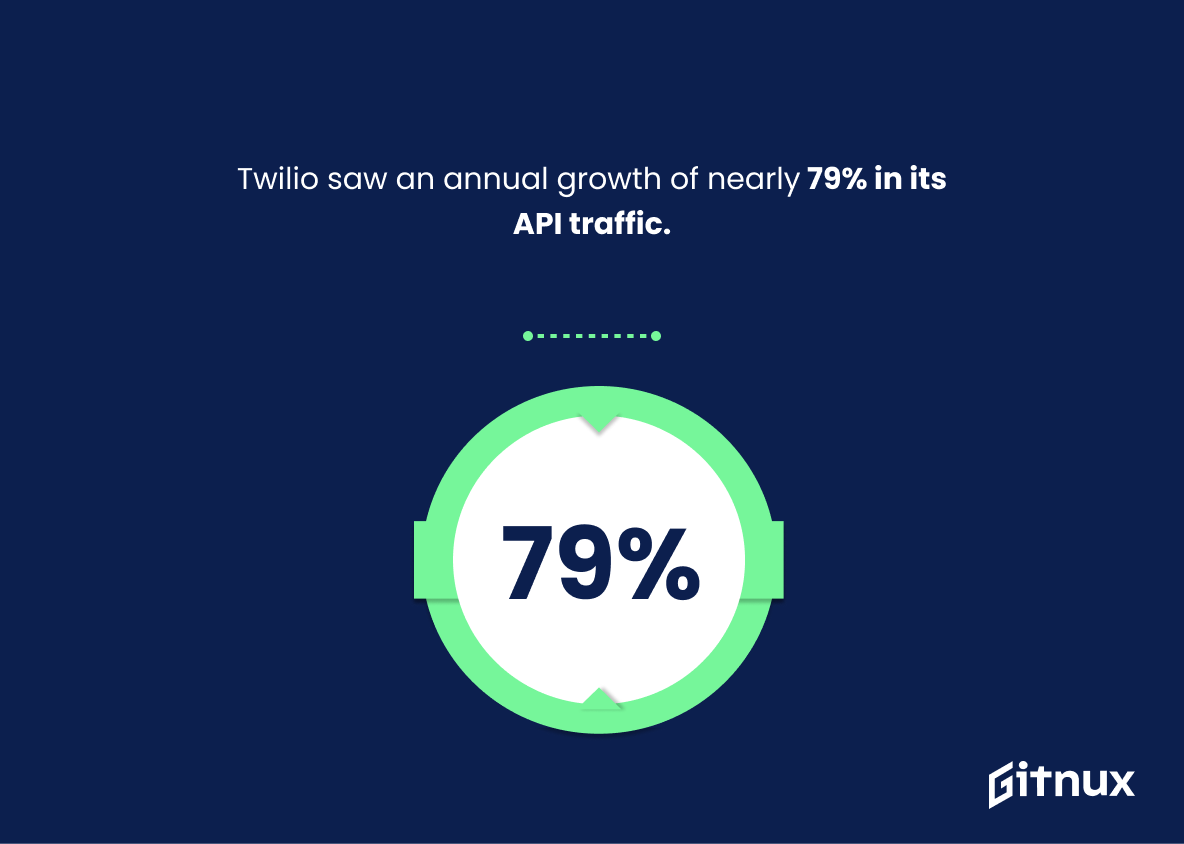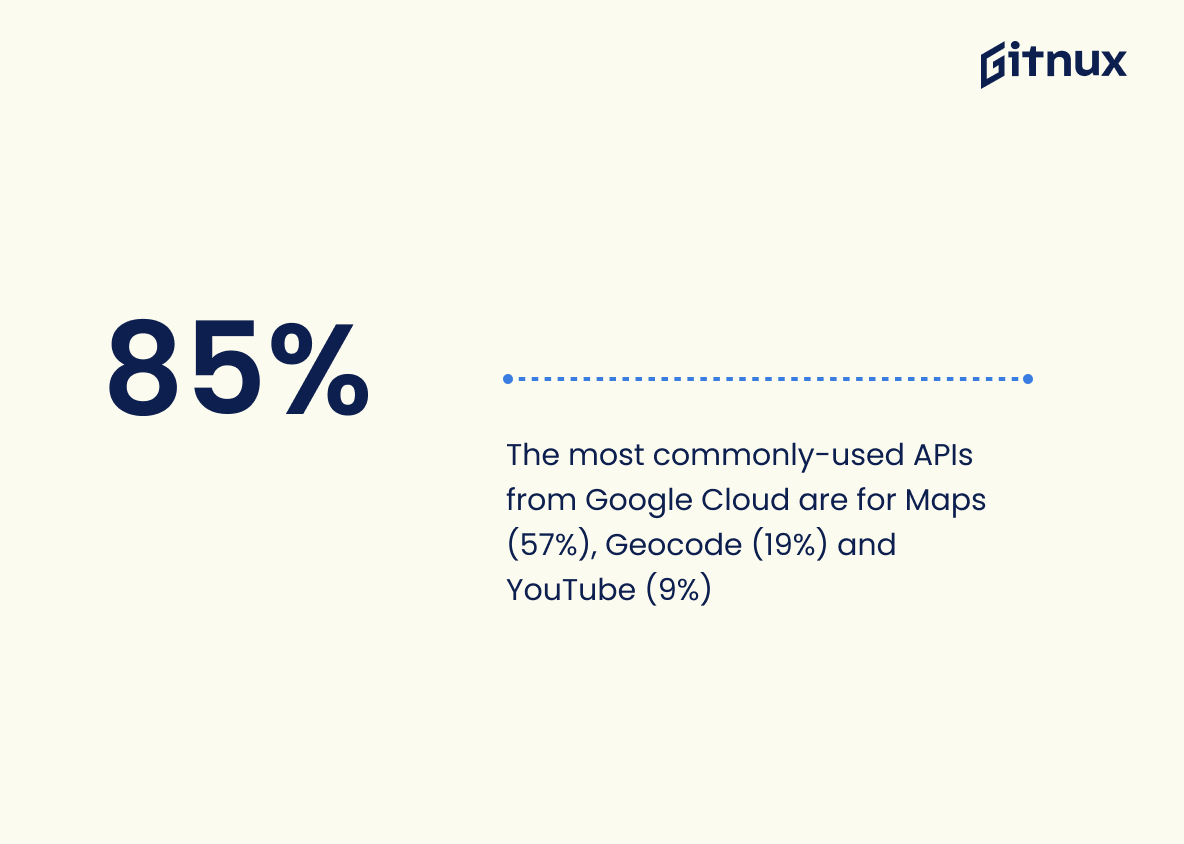Dive into the dynamic world of APIs as we dissect the latest trends, numbers, and phenomena shaping this technological titan. Harnessing the power of digital transformation, the API industry has emerged as an imperative cog in the machine of interconnectivity and data sharing.
This blog post zeroes in on critical API industry statistics, mapping out its explosive growth, pivotal breakthroughs, and its undeniable impact on diverse sectors. Whether you’re a budding entrepreneur seeking opportunities in the digital landscape, a seasoned developer tracking technical advances, or a curious reader, these insights into API stats will come handy in untangling the complex web of today’s interconnected global systems.
The Latest API Industry Statistics Unveiled
The API management market size is projected to grow from $1.2 billion in 2018 to $5.1 billion by 2023, at a CAGR of 32.9% during the forecast period.
Delving into the future of the API industry, we find a projection that paints a picture of exponential growth. The statistic shows us an intriguing journey of the API management market – originating at a value of $1.2 billion in 2018 and potentially soaring to an impressive $5.1 billion by 2023.
This anticipated transformation, with a Compound Annual Growth Rate (CAGR) of 32.9%, unravels a thrilling narrative of the industry’s vibrancy and dynamism. It provides not just a figure but a compelling story – indicating how the industry stands at the precipice of a growth surge, indicating the increasing importance and application of APIs in various enterprise settings.
Such a projection magnifies the role that APIs could play in the tapestry of digital transformation, influencing and guiding companies and developers alike in their strategic considerations and development plans. The API industry, as showcased by this statistic, is not a realm of the future – it’s a burgeoning market that’s expanding here and now at breakneck speed. It signifies that writing about the API industry isn’t just dissecting a niche sector, but peeling back a layer of the digital revolution.
So, let us dive deeper into this numerical wonder and explore all the potential that the API industry holds. After all, as the data suggests, it’s an industry that’s set to astound and inspire.
In 2020, RapidAPI reported over 25000 APIs listed.
The staggering figure of 25000 APIs listed by RapidAPI in 2020 serves as a testament to the explosion in the API industry. This impressive number not only reflects the accelerating pace of technological innovation but also underscores the increasing reliance and integration of APIs in diverse sectors. Essentially, it epitomizes the growing ubiquity and indispensability of APIs in this digital era, carving out its importance in a blog post dedicated to API industry statistics.
Around 86% of enterprises worldwide are using APIs to create business value.
Painting a prolific picture of the global business landscape, the dazzling statistic showcasing that approximately 86% of enterprises worldwide utilize APIs to foster business value serves as a testament to the growing omnipresence and significance of APIs. This vital figure breathes life into the narrative of how modern business digital strategy is now intimately intertwined with API deployment.
Anchoring the blog post, it underlines the tremendous stride API usage has taken, steadily morphing from a technical novelty into an essential business tool employed across the board. Hence, its implication is profound; a stark indicator of the API industry’s accelerated growth, its pervading influence, and the inevitable paradigm shift it’s engendering in the business world.
Twilio has 8 million registered developers.
Highlighting that Twilio boasts 8 million registered developers is instrumental to the discourse on API industry statistics for various reasons. First, it illuminates Twilio’s influential position within the API ecosystem, signifying a vast pool of talent harnessing and innovating on its platform. Furthermore, it gives testament to Twilio’s widespread acceptance, underlining its role as a preferred choice among developers – a testament to the robustness, flexibility, and efficiency of its API provisions.
Lastly, this revelation provides a reference point to gauge and comprehend the massive scale and exponential growth that characterizes the API industry – a crucial aspect for stakeholders to behold. The sheer number of developers engaged with Twilio gives shape to the magnitude of the API industry, reinforcing its critical importance in today’s digital economy.
Twilio saw an annual growth of nearly 79% in its API traffic.
Unleashing the power of numbers has revealed a potent surge in Twilio’s annual API traffic, soaring to an astonishing 79%. This isn’t just a mere percentage; rather, it serves as a reflection of Twilio’s thriving dominance in the competitive API landscape. Such an impressive blaze of growth substantiates the idea that APIs are no longer a side dish, but rather the main course in a sumptuously served tech banquet.
This upward trajectory decidedly sets the stage for the continually expanding significance of the API industry, weaving an undeniable testament to the increasing reliance and integration of APIs into verticals across the digital ecosystem.
It’s projected Stripe will handle $455 billion in payment volume in 2021 with the help of its API.
Dipping our toe into the fascinating pool of API industry statistics, it’s noteworthy to let the spotlight shine brightly on Stripe’s projected handling of an astounding $455 billion in payment volume in 2021, a feat primarily carried to fruition through its API. This illuminates just one example of the scale at which APIs can operate, providing a foretaste of how crucial they are likely to become to various industries, simultaneously fortifying Stripe’s stature in the market.
It’s a visible testament to the robust synergy between financial tech and advanced APIs, transcending traditional boundaries as it sprints toward shaping the architecture of digital transactions. It’s like watching an orchestra at play and the enormous payment volume handled by Stripe is the crescendo, echoing the reach and potential of APIs in modern business operations.
The usage of Facebook’s API is trending upward, with 22% growth compared to previous years.
The rising tide of Facebook’s API usage, boasting a 22% growth from previous years, shines a beacon on the evolving dynamics of the API industry. In the grand chessboard of API trading, this statistic is not a mere number, but a harbinger of the future, signalling a bullish trend in the realm of social media APIs.
This development has the potential to redefine strategies, shift business alliances, prompt innovation, and invest a renewed focus on API-oriented growth models. Hence, this upward curve in Facebook’s API usage is a riveting plot point in the gripping narrative around API Industry Statistics.
The most commonly-used APIs from Google Cloud are for Maps (57%), Geocode (19%) and YouTube (9%)
Dipping into the world of API Industry Statistics, let’s journey through the figures that interlace themselves into the fabric of our digital engagements. Taking center stage in this intricate ballet of codes are Google Cloud’s powerful APIs: notably Maps, cornering a whopping 57% of usage, Geocode securing a 19% hold, and YouTube just brushing the double digits at 9%.
These figures subtly nudge us to visualize immense virtual landscapes where businesses and individuals continuously interact with Google’s digital geography tools. They reveal the silently shifting tides in our data-driven world, as developers find resonance and relevance in the functionality of these APIs.
Ready to make the world their playground, a vast majority of developers have homed in on Google Maps suggesting its pivotal role in industries where location-based services are a crucial game-changer. Meanwhile, Geocode, the underappreciated guide to all things GPS, underpins applications to convert data into geographical coordinates—its respectable 19% usage indicating an inherent reliance on this unsung hero of APIs.
Resonating with creative minds, 9% have tapped into the global video-sharing platform’s trove of resources via YouTube’s API, unmasking the growing trend of multimedia integration in apps and websites.
In essence, these figures offer an intriguing vista of trends and preferences in the API industry, showcasing how Google’s APIs are being leveraged to enhance functionality, improve user experiences, and drive growth in the digital space.
Conclusion
To sum it up, the API industry has rapidly evolved and expanded over the past few years, as evidenced by the impressive statistics. Not only are APIs driving business growth, but they’re also transforming the way industries operate. The continually growing numbers show that businesses are starting to recognize the importance of API integration for their survival in the market.
As a consequence, the API industry is anticipated to continue its upward trajectory in the coming years. Whether you’re an IT professional, developer, or business owner, staying current on the latest API trends and statistics will keep you at the forefront of this dynamic technological wave. And that could be the key to future-proofing your business in today’s digital age.
References
0. – https://www.www.rapidapi.com
1. – https://www.www.twilio.com
2. – https://www.www.similarweb.com
3. – https://www.ymedialabs.com
4. – https://www.nordicapis.com
5. – https://www.www.marketsandmarkets.com
6. – https://www.stripe.com
